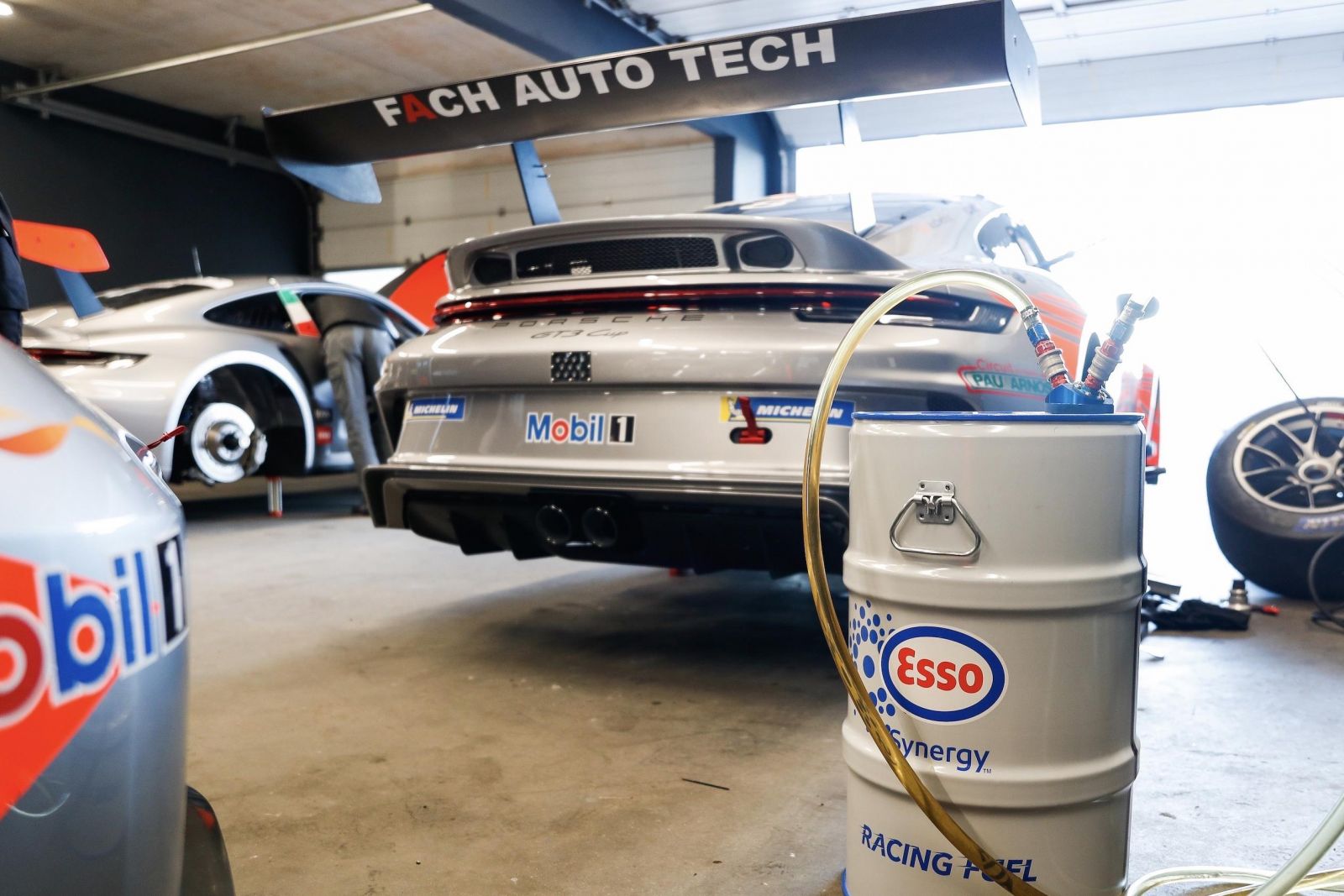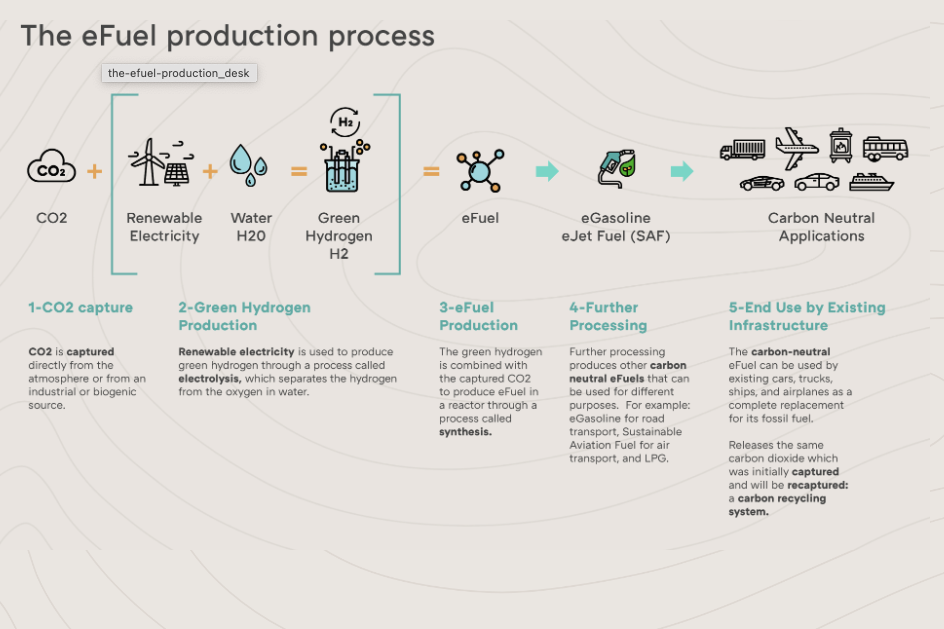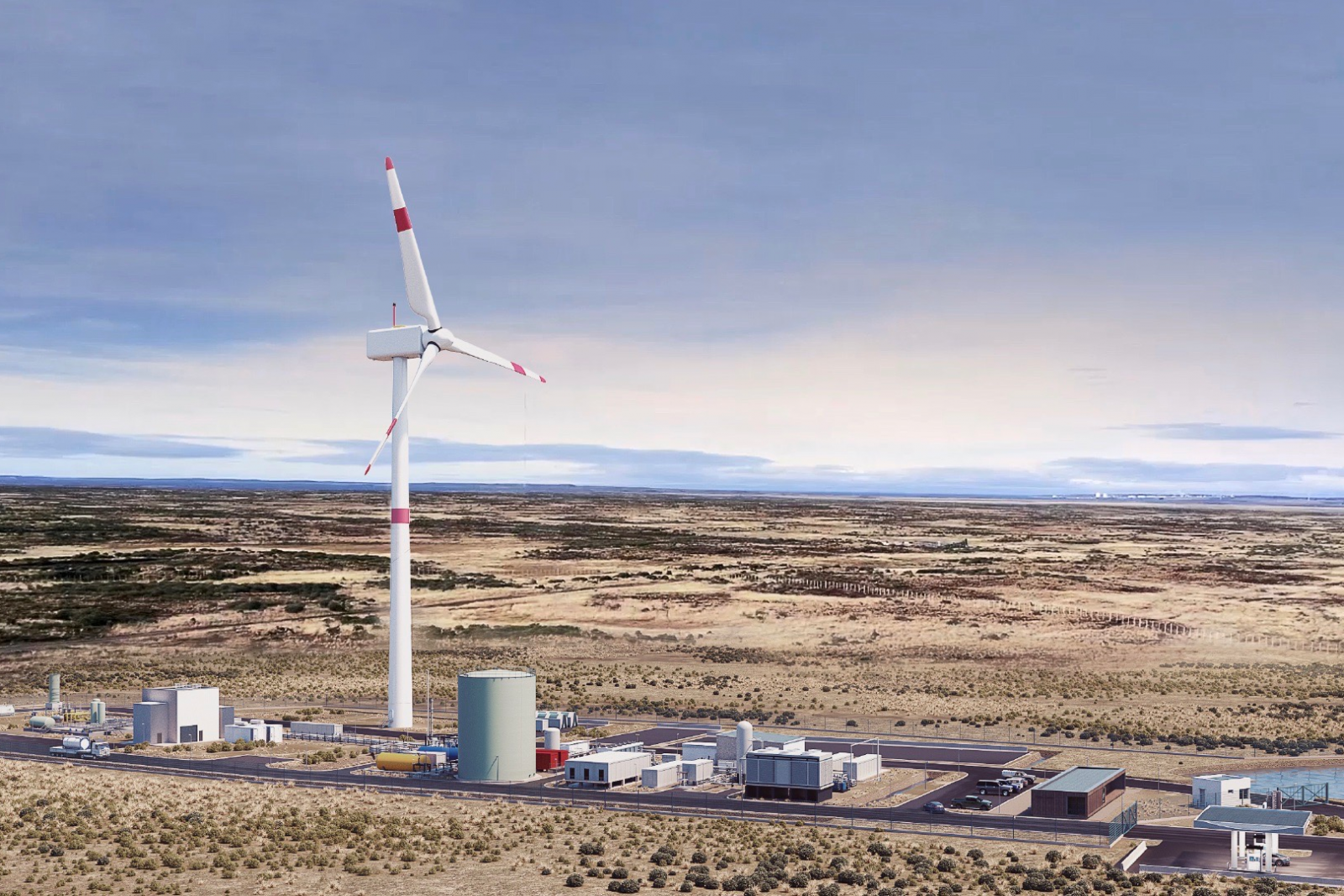Fill it up: Green eFuels explained

The demand for electric vehicles is clearly growing at a huge rate and they are predicted to become the mainstream in the coming decades.
However, they currently account for a small portion of the total new car market, with the majority of the world’s car fleet still using internal combustion engines – whether on its own or as part of a hybrid arrangement.
This raises the question of whether anything can be done to reduce the emissions and carbon footprint of vehicles on the road today. eFuels is one of the potential answers to this problem.
They also have the potential to be a way to keep thirsty, noisy, emotional internal combustion engines alive in small numbers as the world goes on electricity.
What are EFuels and how are they created?
The term ‘eFuel’ stands for “electrofuel”, with the electrical component of the word denoting that electrolysis is an essential step in the production of eFuels. eFuels are also commonly referred to as synthetic fuels.
In short, eFuels have the potential to be produced in a sustainable way, capturing atmospheric carbon dioxide during production, helping to offset any carbon dioxide emissions released when e-fuel is burned ignited by a vehicle and allows close to zero emissions.
This carbon dioxide capture serves as the first step of the eFuel manufacturing process, with the eFuel manufacturer using various techniques to capture CO2 directly from the air or from other sources in the environment.
A separate source of renewable electricity, such as hydroelectricity or solar energy, is used to produce hydrogen sustainably by powering a technique known as electrolysis, whereby a Electricity is applied to separate the hydrogen atoms from the oxygen in the water.
Next, this sustainably produced hydrogen is combined with carbon dioxide previously recovered in the plant, through a process known as synthesis, to produce eFuel, usually in the form of methanol.
Methanol can in certain cases be used directly to power vehicles, or further refined/converted, such as through the methanol-to-gasoline process run by oil giant ExxonMobil. invented, used as an alternative to fossil fuels of natural origin such as gasoline and diesel.
What are the potential benefits and drawbacks?
The main benefit of eFuels is that they have significantly lower overall carbon emissions than naturally derived fossil fuels, with automakers like Porsche claiming an 85% reduction in total carbon dioxide emissions. .
While e-fuel combustion releases CO2 in a similar way to fossil fuels, synthetic fuels burn cleaner. Compared to conventional fossil fuels, which have between 30 and 40 components, synthetic fuels have only 8.
Their manufacturing process also captures the original carbon dioxide from the environment, helping to offset any emissions. Total emissions are close to zero.
Furthermore, synthetic fuels could theoretically be refined to have properties similar to those of diesel or gasoline today.
This means that existing refueling infrastructure such as typical gas stations and tankers can continue to be used, resulting in significant cost savings.
Having properties similar to conventionally derived fossil fuels also means that today’s internal combustion engine vehicles will be able to run on eFuel without modification, extending their lifespan.
This can be especially useful in developing markets that would otherwise be unable to pay for expensive EV charging networks.
Currently, the eFuel production process still has limitations. While the basic scientific principles are well understood, technologies for carbon capture and synthesis are in their infancy, with relatively large amounts of energy required to carry out these processes.
In addition, ensuring that only renewable energy is used to power the electrolysis process remains a challenge, as this can often limit the location or increase the cost of the eFuel end product.
Porsche notes that once eFuel production ramps up and economies of scale are achieved, it is aiming for a wholesale price of $2.00 per liter, or $2.88 per liter (AUD) based on on the current exchange rate.
This is still significantly more expensive than even the premium 98-octane unleaded available today, which is the price before taxes and other charges.
It is possible that the eFuel will be marketed in different octane ratings like the standard and premium unleaded, and any high octane eFuel will of course cost more. .
Which auto companies are investing in eFuel and is there any local involvement?
Arguably the most famous car company that has made an important commitment to eFuel is Porsche.
The company recently announced it is investing US$75 million in HIF Global LLC, a parent company that develops or invests in the development of industrial e-fuel production facilities, in exchange for 12.5% ownership of the company.
Porsche announced that this additional round of funding brings its total commitment to eFuels to more than $100 million.
In turn, HIF Global LLC is developing eFuel production facilities around the world, including in Punta Arenas, Chile, where wind energy is expected to be the primary source of energy for electrolysis.
THAN: Tasmania to produce eco-friendly eFuel for Porsche from 2026
However, more interesting is that HIF Global LLC has also committed to development of an Australian eFuel manufacturing facility in Burnie, Tasmania.
With construction scheduled to begin in 2024, HIF expects the plant to begin eFuel production in mid-2026. The maximum projected production capacity is 190 tons of eFuel per day, or 100 million liters per year.
For this plant, HIF notes that carbon dioxide will be obtained from biological (organic) sources, with electricity also coming from renewable sources.
The Volkswagen Group’s stable partner Audi has also shown an interest in eFuels, and in a 2018 press release announced it was planning a pilot plant for e-diesel production, with can produce 400,000 liters per year.
More recently, however, Audi has committed to phasing out internal combustion engines by 2026, and it’s unclear to what extent the company will continue to invest in synthetic fuels.
Time and commercial availability
With major efforts still being made to improve the efficiency of the eFuel manufacturing process and production facilities still underway, it is unlikely that eFuels will be widely available until the end of the years. 2020.
However, when eFuels are marketed, they are expected to be compatible with most gasoline and diesel vehicles currently available.
THAN: What engine oil should you use?
THAN: How to maximize the life of an electric vehicle battery
THAN: Fill it up, biodiesel and other biofuels
THAN: Fuel ratings explanation; 91, 95, 98 RON and E10










